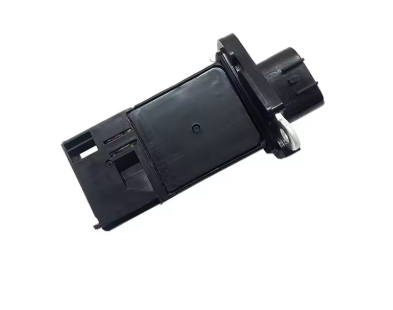Как работают расходомеры в топливных и гидравлических системах автомобилей
Основы и функции расходомеров в работе транспортных средств
Автомобильные расходомеры в основном отслеживают объем топлива и других жидкостей, проходящих через трубопроводы автомобиля. Они рассчитывают расход, определяя скорость движения жидкости и учитывая диаметр трубопровода. Существует несколько типов расходомеров — механические с вращающимися лопатками, турбинные датчики, а также ультразвуковые устройства, использующие звуковые волны. Эти устройства контролируют различные жидкости — от бензина и дизельного топлива до охлаждающих жидкостей и моторных масел. Почему это так важно? Правильный контроль за потоком жидкостей обеспечивает стабильную работу двигателя. Неточные показания могут привести к таким проблемам, как пустые топливные магистрали или недостаточная смазка, что в конечном итоге приведет к поломке и дорогостоящему ремонту.
Измерение потока жидкостей и газов при оценке эффективности двигателя
Правильные измерения потока помогают двигателям достичь сложного баланса между мощностью и топливной эффективностью. Современные датчики массового расхода жидкости контролируют количество топлива, поступающего в инжекторы, с довольно высокой точностью — примерно плюс-минус 1,5 процента, согласно данным SAE за 2023 год. Они обеспечивают оптимальное соотношение воздуха и топлива в момент сгорания в двигателе. В то же время, расходомеры газа контролируют выхлопную систему, отслеживая объем газов, возвращаемых обратно в двигатель. Это позволяет сократить вредные выбросы оксидов азота примерно на треть в моделях с турбонаддувом. В результате мы получаем автомобили, которые успешно проходят строгие испытания по выбросам и при этом обладают значительной мощностью под капотом — то, что инженеры-автомобилисты часто называют одновременным достижением скорости и устойчивого развития.
Как расходомеры топлива обеспечивают мониторинг в реальном времени
Сегодня топливные расходомеры не просто выполняют регулярные измерения, но превращают их в полезные рекомендации для водителей. Постоянный поток данных отображается прямо на приборной панели, так что водитель может видеть, сколько топлива расходуется в зависимости от его стиля вождения. Если расход топлива падает более чем на 4 процента по сравнению с нормальными показателями, загораются индикаторы, предупреждающие о возможных проблемах, таких как загрязненные форсунки или утечки в топливной системе. Согласно недавним исследованиям Министерства энергетики за 2022 год, такого рода уведомления в режиме реального времени помогли коммерческим автопаркам сократить расход топлива в режиме холостого хода примерно на 18%. Более того, своевременное выявление небольших проблем благодаря такому мониторингу позволяет продлить срок службы двигателей на 20–30 тысяч километров пробега, прежде чем потребуются капитальный ремонт.
Мониторинг в реальном времени и оптимизация расхода топлива
Контроль текущего расхода топлива для повышения эффективности
Современные расходомеры измеряют расход топлива с точностью ±0,5%, выявляя неэффективность, связанную с простоями, резким ускорением или неправильным выбором передач. Исследование операций автопарка 2024 года показало, что транспортные средства, использующие мониторинг в реальном времени, повысили эффективность на 5% в течение трех месяцев за счет корректировки поведения.
| Фокус оптимизации | Повышение эффективности | Сложность реализации |
|---|---|---|
| Снижение простоев | 8-12% | Низкий (автоматические оповещения) |
| Оптимизация маршрута | 6-9% | Средний (интеграция GPS) |
| Балансировка нагрузки | 4-7% | Высокий (сенсорные сети) |
Повышение осведомленности водителей и изменение операционных привычек с помощью данных
Отображая показатели расхода топлива непосредственно на приборных панелях, расходомеры создают немедленные циклы обратной связи. Водители, которые снижают колебания скорости на 15%, обычно уменьшают расход топлива на 9%. Эффективные изменения в поведении включают:
- Поддержание стабильных оборотов ниже 2500
- Ограничение использования кондиционера во время движения в городе
- Внедрение протоколов отключения питания через 30 секунд простоя
Информация на основе данных, полученная с помощью непрерывного измерения потока
Сложные системы комбинируют данные о потоке с нагрузкой на двигатель, высотой над уровнем моря и историей технического обслуживания, используя машинное обучение для выявления скрытых неэффективностей:
- Топливные форсунки работают с эффективностью 83% (пороговое значение: 90%)
- Воздушные фильтры, вызывающие увеличение расхода топлива на 5,2%
- Отклонения давления в шинах, влияющие на расход топлива на 2,8%
Парки транспортных средств, применяющие эти данные, сообщают о среднегодовой экономии $18 700 на одно транспортное средство за счет целенаправленного технического обслуживания и обучения водителей
Диагностические, технические и экономические преимущества расходомеров
Профилактическое обслуживание с использованием данных о потоках для предотвращения выхода систем из строя
Счетчики потока помогают техническим специалистам выявлять проблемы до их усугубления, например, когда топливные насосы начинают ослабевать или инжекторы начинают деградировать. Это достигается за счет анализа изменений в потоке топлива или охлаждающей жидкости через систему. Согласно отчету прошлого года под названием Fleet Efficiency Report, такого рода предиктивное обслуживание сокращает незапланированное время простоя примерно на 27% для предприятий, эксплуатирующих большое количество транспортных средств. Регулярный анализ данных позволяет бригадам технического обслуживания планировать ремонт в рамках обычного сервисного обслуживания, вместо того, чтобы сталкиваться с дорогостоящими поломками где-нибудь на дороге. Это имеет смысл как с финансовой, так и с операционной точки зрения для менеджеров автопарков, стремящихся поддерживать бесперебойную работу своих операций без неожиданностей.
Раннее обнаружение засоров, утечек и неэффективности инжекторов
Когда поток внезапно падает, это обычно означает, что где-то есть что-то, блокирующее фильтры или линии подачи. С другой стороны, если поток просто увеличивается без объяснения, велика вероятность того, что в системе есть утечка. Современные счетчики действительно могут обнаруживать мелкие проблемы с соотношением воздуха и топлива вплоть до разницы в 2%, что помогает механикам выявлять неисправные инжекторы до того, как они серьезно повлияют на эффективность сгорания топлива в двигателе. Согласно исследованию, опубликованному в прошлом году, автомобили с такими системами контроля потока устраняли проблемы с утечкой примерно в два раза быстрее по сравнению со старыми методами, при которых кто-то должен был визуально искать признаки неисправности.
Экономические преимущества: Сокращение потерь топлива и предотвращение кражи
Мониторинг потока снижает эксплуатационные расходы двумя основными способами. Во-первых, выявление неэффективных режимов сгорания позволяет оптимизировать маршруты и поведение, сокращая расход топлива до 15%. Во-вторых, отслеживание в реальном времени создает поддающиеся аудиту записи об использовании, делая несанкционированный слив сразу обнаруживаемым.
Парадокс отрасли: недостаточное использование данных о потоке, несмотря на высокую диагностическую ценность
Несмотря на то, что данные о потоке обеспечивают 87% точности в диагностике проблем двигателя (Автомобильный технический аудит 2024), они остаются недоиспользованными — только 35% операторов автопарков систематически их анализируют. Этот разрыв сохраняется, даже несмотря на то, что автопарки, основанные на данных, сталкиваются с на 30% меньшими затратами на техническое обслуживание по сравнению с реактивными подходами. Барьерами являются зависимость от устаревших диагностических методов и воспринимаемая сложность интерпретации метрик потока.
Часто задаваемые вопросы
Какие типы расходомеров используются в автомобильных приложениях?
В автомобильной промышленности используются различные типы расходомеров, включая объемные, турбинные, ультразвуковые и электромагнитные расходомеры. Каждый тип подходит для определенных автомобильных жидкостей и требований двигателя.
Как расходомеры повышают топливную эффективность транспортных средств?
Расходомеры обеспечивают отслеживание расхода топлива в реальном времени, помогая водителям выявлять неэффективность, например, простоя и резкое ускорение. Эти данные позволяют оптимизировать поведение и маршруты, повышая топливную эффективность.
Как расходомеры способствуют техническому обслуживанию транспортных средств?
Расходомеры помогают заранее обнаруживать засоры, утечки и неэффективность инжекторов, снижая непредвиденные простои и затраты на техническое обслуживание. Они позволяют осуществлять профилактическое обслуживание за счет отслеживания изменений потока жидкостей, обеспечивая своевременный ремонт.
Почему данные о расходе недоиспользуются, несмотря на их высокую диагностическую ценность?
Потоковые данные используются недостаточно из-за зависимости от устаревших методов диагностики и воспринимаемой сложности интерпретации метрик. Системный анализ потоковых данных может значительно снизить затраты на техническое обслуживание, однако внедрение остается ограниченным.
Содержание
- Как работают расходомеры в топливных и гидравлических системах автомобилей
- Мониторинг в реальном времени и оптимизация расхода топлива
-
Диагностические, технические и экономические преимущества расходомеров
- Профилактическое обслуживание с использованием данных о потоках для предотвращения выхода систем из строя
- Раннее обнаружение засоров, утечек и неэффективности инжекторов
- Экономические преимущества: Сокращение потерь топлива и предотвращение кражи
- Парадокс отрасли: недостаточное использование данных о потоке, несмотря на высокую диагностическую ценность
-
Часто задаваемые вопросы
- Какие типы расходомеров используются в автомобильных приложениях?
- Как расходомеры повышают топливную эффективность транспортных средств?
- Как расходомеры способствуют техническому обслуживанию транспортных средств?
- Почему данные о расходе недоиспользуются, несмотря на их высокую диагностическую ценность?

